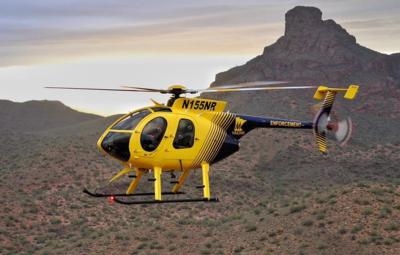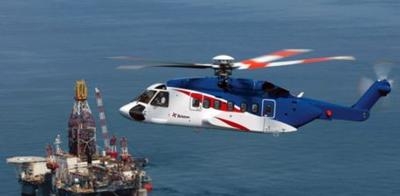Total Deliveries Have Declined 42 Percent Since 2013
The civil helicopter industry hasn’t caught a break since oil prices sank below $100 per barrel five years ago. Total delivery values of these aircraft have declined 42% from nearly $7 billion in 2013 to just under $4 billion last year, according to the General Aviation Manufacturers Association (GAMA). The first quarter of 2019 portends another difficult year, as values plummeted 15% compared to the same period in 2018, from $604 million to $514 million, according to aviation analyst Brian Foley.

Interestingly, Foley says, the number of unit deliveries didn’t change all that much between 2013 and 2018. Rather the mix of sizes changed with fewer high-value big helicopters being shipped.
Compared to the small- to average-sized helicopters used by police, air ambulance, corporate and others, offshore helicopters used by the oil and gas industry are super-sized to move upward of 19 workers and their heavy equipment to far-flung oil rigs miles out in the ocean. Due to their sheer size and performance capability, these queens of the sky cost multiples of what typical rotorcraft cost. As an example, compared to a $1M entry-level helicopter, an offshore machine can easily weigh in at over $25 million.
As the price of oil tanked from well over $100 per barrel five years ago to less than $40 a year later, the offshore industry reeled, with oil companies scaling back their rig and exploration activities, greatly reducing the need for air transportation. This was compounded by the rise in fracking, a land-based oil recovery process without the need for helicopter transport.
The impact to the helicopter industry was devastating, with large offshore helicopters falling from 15% of all industry deliveries five years ago to just 6% last year. Existing aircraft fleets were put into storage as supply outstripped demand for lift. Offshore helicopters are very specialized for the mission and can’t easily be repurposed for a non-oil mission without significant and expensive modifications. Even then, the market for these repurposed behemoths is still limited at best.

Harder hit were the companies who operated these helicopters for the oil companies, with 4 leading providers entering Chapter 11 bankruptcy, although each having since reorganized or is in the process of doing so. It is these companies which owned or leased their helicopters and either parked or dumped many of them on the market. Some just handed the helicopter and keys back to their financial institution which caused one exposed lessor to declare bankruptcy. Unfortunately, shedding debt by declaring bankruptcy by these operators does not solve the original issue of continued excess capacity. It addresses the symptom but not the cause. Now not only is there the possibility of additional operators entering bankruptcy, there is the very real chance of those who have already reorganized refiling.
This presents a survival of the fittest situation to the offshore helicopter producers and their flagship models, namely Sikorsky, a Lockheed Martin division with its S-92, Airbus Helicopters and the H225, the AW189 from Leonardo (formerly AgustaWestland) and Textron Bell’s brand new 525 which is still undergoing final testing. There could conceivably only be 1 or 2 of these models remaining after the dust settles.
So, who is the last man standing? The Sikorsky S-92 got a reprieve by being selected to supply the U.S. presidential helicopter fleet although beyond those deliveries there's a question mark. The Airbus H225 has a market perception problem from high-profile accidents from which it is unlikely to recover. Textron, a newcomer to this high-end market, still has time to pull the plug on the Bell 525 before any further investment is made. That leaves Leonardo and its AW189 as the only obvious shoo-in, with perhaps one of the others as a straggling co-supplier to oil and gas.
The prospects of a return to the golden days of supplying the once lucrative oil and gas industry with pricey offshore helicopters seems elusive. It’s believed that oil prices must first stabilize for an extended length of time at a price of $85 or more per barrel, a scenario not widely envisioned at the current time.
As such, the values of industry deliveries appear likely to continue their decline, or at best remain flat. Difficult decisions will be made in the coming months testing the resolve of those doing business in the oil and gas segment. Excess capacity must be first be rationalized, a necessary step which thus far has been artfully dodged or delayed, which will cause further consternation among manufacturers, operators, and lessors.
(Source: Brian Foley news release. Images from file)
 ANN's Daily Aero-Term (04.25.24): Airport Rotating Beacon
ANN's Daily Aero-Term (04.25.24): Airport Rotating Beacon ANN's Daily Aero-Linx (04.25.24)
ANN's Daily Aero-Linx (04.25.24) Klyde Morris (04.22.24)
Klyde Morris (04.22.24) Airborne 04.24.24: INTEGRAL E, Elixir USA, M700 RVSM
Airborne 04.24.24: INTEGRAL E, Elixir USA, M700 RVSM Airborne 04.22.24: Rotor X Worsens, Airport Fees 4 FNB?, USMC Drone Pilot
Airborne 04.22.24: Rotor X Worsens, Airport Fees 4 FNB?, USMC Drone Pilot




